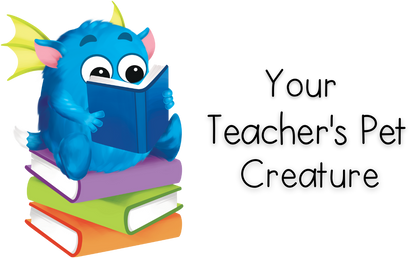Your Cart is Empty
Learning Topics
Best Sellers

Why The Power of Yet Should Have a Place In Every Classroom
by Maria Denholm November 28, 2021 3 min read
Why the Power of Yet should have a place in every early childhood classroom Young children enjoy exploring the world around them but can be hesitant to try new things. When a new activity or skill is a challenge, they can become discouraged when they can’t do it perfectly right away. This sometimes leads to tantrums and an unwillingness to try again. So what can you do to encourage frustrated learners to keep going? First, introduce them to a growth mindset and teach them to harness the power of “yet.” What is Growth Mindset? A growth mindset, defined by psychologist Carol Dweck, is the belief that we develop our talents and skills over time. No one is born with fully realized abilities. Dweck’s research on motivation led her to conclude that people are much more likely to achieve goals when they believe they can improve. This is also true for children. They are more willing to try new things when they believe that they can develop their skills. However, some children can be quick to give up when challenges arise. They feel that putting in the effort isn’t worth their time because they just can’t do it. So why bother trying? When students exhibit this fixed mindset, it’s our job as early childhood educators to help them shift their thinking with the word “yet.” Power of “Yet” "Yet" is such a tiny word, but it can lead to major breakthroughs. Children sometimes view failure as a fault in their character, which can discourage them from trying. This may cause them to act out and cause disruptions. Young learners will voice their frustration by saying things like: I can’t read my name. I’ll never be able to do it! I can’t ride a bike without training wheels. I don’t want to ride it anymore! I can’t poke the straw in my juice box. You need to do it for me! When this happens, repeat their sentence and add the word “yet.” For example, "You can’t read your name...yet." Then talk to the child and help them think about things they can do to reach their goal, like practicing letter sounds with alphabet cards. Afterward, have them repeat their sentence again with the word “yet.” Prompting young children to say “yet” helps train their brains to recognize that accomplishing goals takes time and effort. Students who understand the power of "yet" are more motivated and willing to meet challenges because improvement is always possible. How to Encourage Students It’s as simple as reframing your praise and your feedback. It’s easy to forget that our words can have a lasting impact on the mindset of a child. As the saying goes, “the way we talk to children becomes their inner voice.” Early childhood teachers need to make sure that our students’ inner voices are positive and encouraging. To quote Carol Dweck, “The best thing they (adults) can do is teach children to love challenges, be intrigued by mistakes, enjoy effort, and keep on learning.” Do this for positive thinking: Focus on effort (I can see you put a lot of time into your drawing.) Acknowledge failures (Oh no! You fell off your bike. Do you want to take a break before trying again?) Encourage children to talk through their thinking (Math problems can be very frustrating. What do you think you should do first? Let’s talk about it.) Don't do this because it fosters negative thinking: Focus on the outcome (Great drawing! Is it a house?) Criticize failure (You fell off your bike, so it’s going in the garage until you’re ready to try harder.) Giving children the answers. (The answer to the problem is 4. Maybe you’ll get it another day.) Small word, big impact Y-E-T. These 3 letters can become the force that motivates children to keep trying. Having students add that small word to their frustrations helps them shift their mindset, motivating them to try again. The power of “yet” should have a place in your classroom because it is a powerful tool that encourages resilience, perseverance, independence, and agency. When children believe they can, they will.















